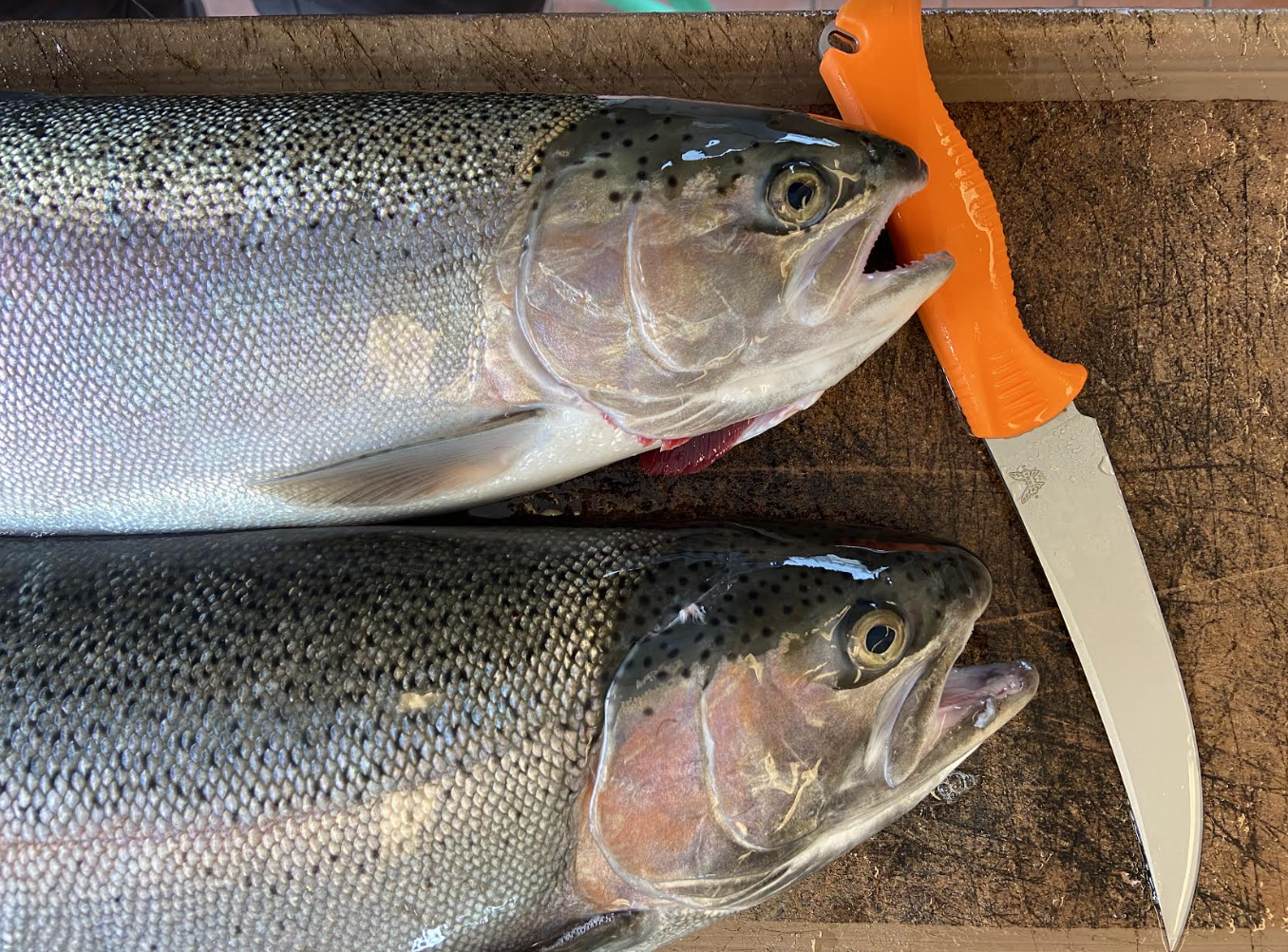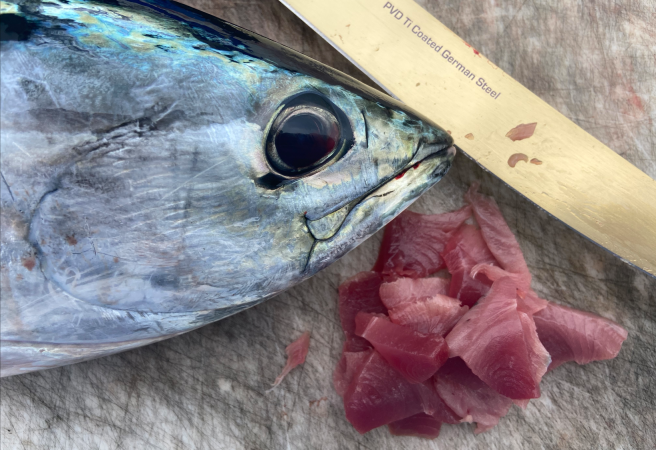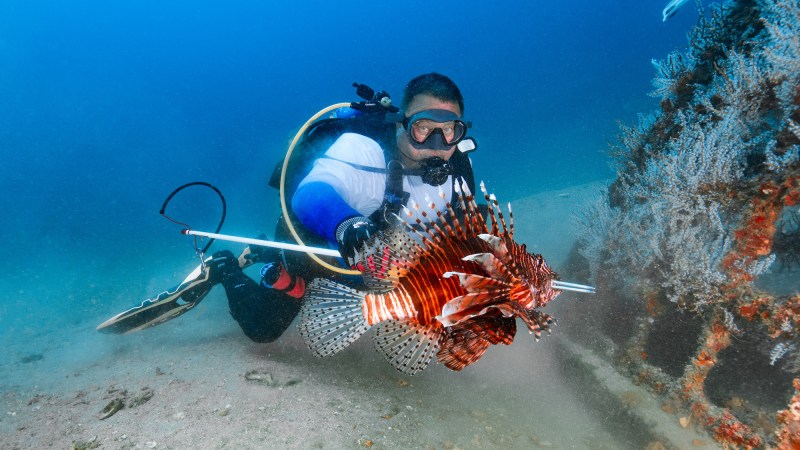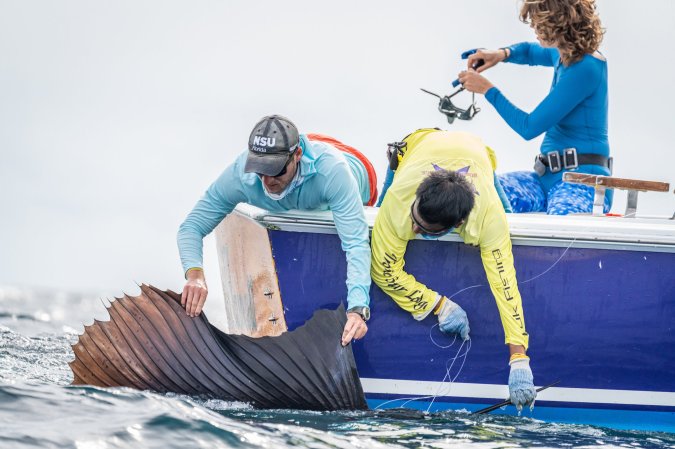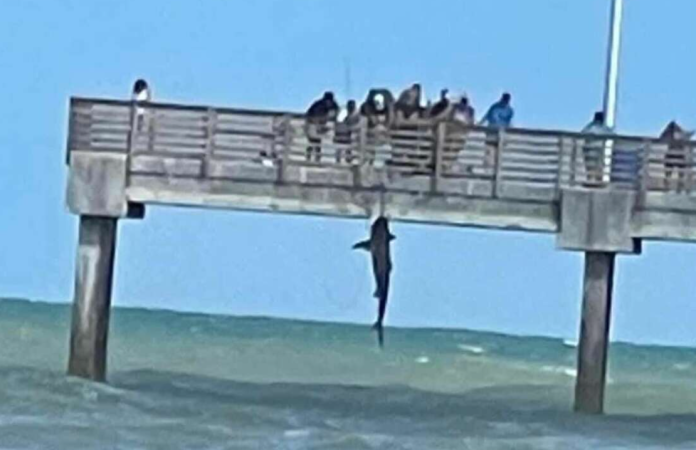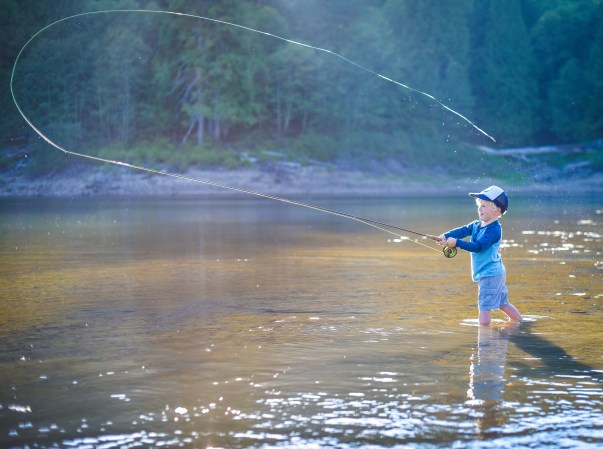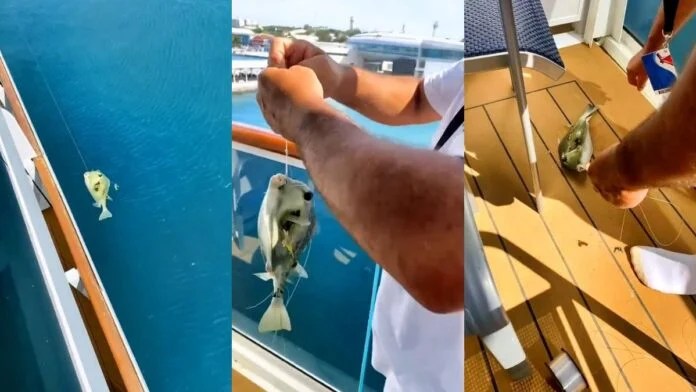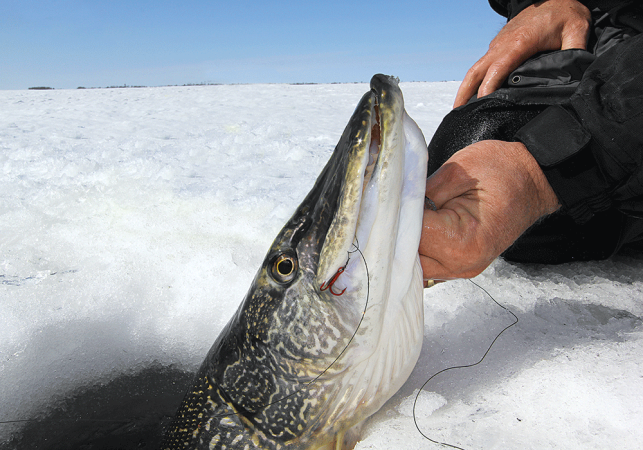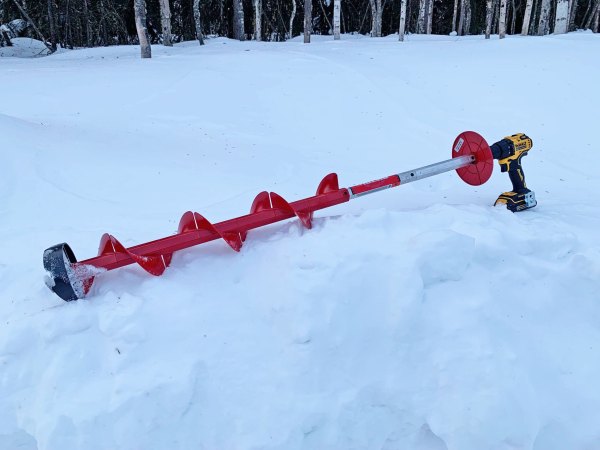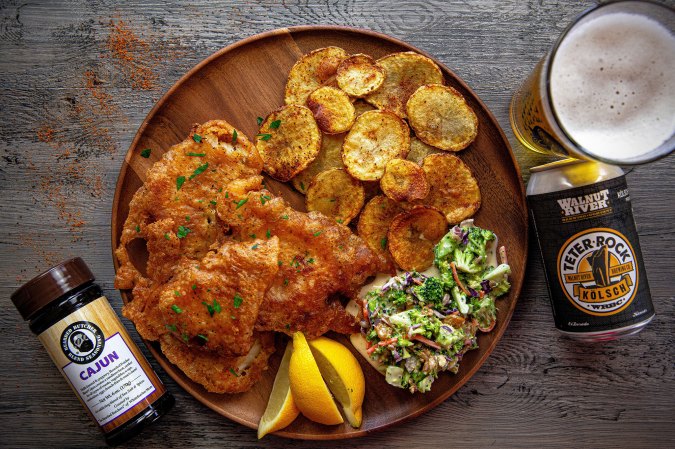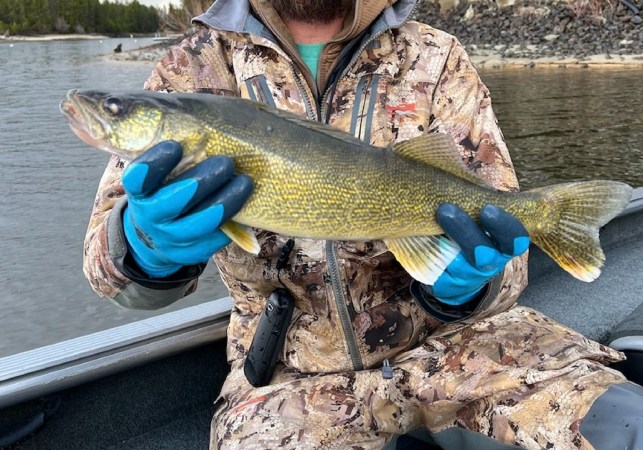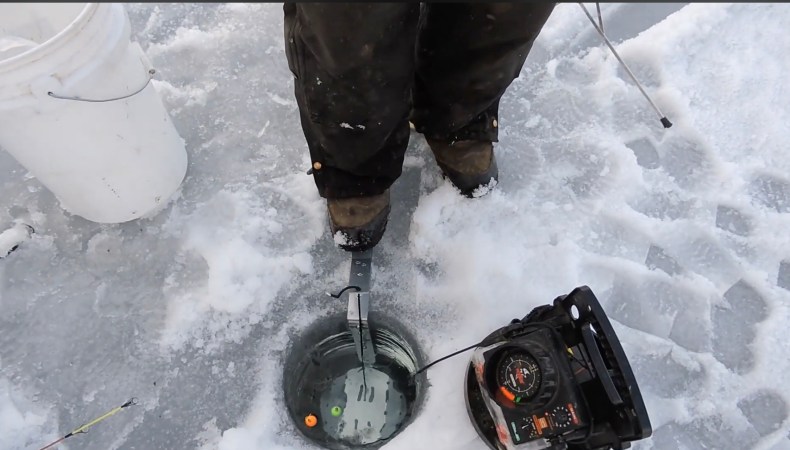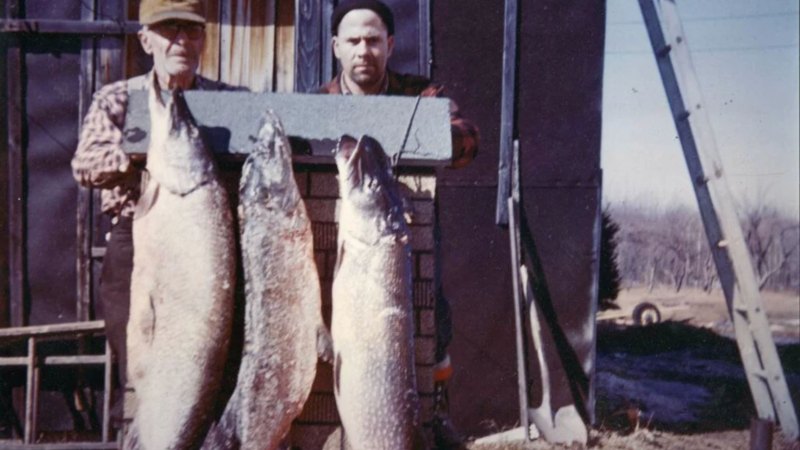A trained chef is going to tell you it is 110% critical that the blood of a fresh fish be drained before taking it to the kitchen. One of the good ‘ol boys in Alabama or Mississippi sitting on a dock loading a bucket with crappies and catfish for the church fish fry is likely to tell you that’s hogwash. Both people know a thing or two about preparing delicious fish, so who’s right and who’s wrong? There’s no definitive answer.
What is definitive, however, is that learning how to bleed a fish is pretty easy. It’s just an extra step in the fish care process that more and more people lately seem to believe is necessary before tossing anything from a 15-inch walleye to a 50-pound cobia on the cutting board.
So, let’s explore how to bleed a fish properly, plus a few myths and realities about bleeding so you can make your own call. And if that call happens to be a check in the red column, you’ll be all set to start the flow.
How to Bleed a Fish
Opinions vary on the proper way to bleed a fish, but truthfully, I think the method depends on the size of the fish and the circumstances. Regardless, all bleeding methods tie back to the gills, as blood surges through them constantly. A fish’s gills are the equivalent of our aorta—the main high-pressure vein in our system. Sever it and we’ll drain out pretty fast. The key in my opinion, however, comes down to draining vs. spilling that blood.
Gill Popping
With smaller species, it’s not uncommon to see anglers simply reach into the gills with their fingers and rip them out—a technique referred to as “popping” the gills. The process leaves the broken ends of the gills exposed, and blood will continue flowing out of those ends. I think this is a fine technique for fish measuring less than 16 inches, as there’s very little blood in their systems to begin with. However, I’m not a fan of gill popping with larger species.
Cutting the Gills
My preference is to sever just one or two gills on one side of the fish with shears or a knife. Then, immediately after making the cut, I want the fish back in water, be it a livewell on a boat, a bucket, in the net, or on a rope stringer. Though the method can be perceived as cruel, I want the fish to still have plenty of life when it’s returned to the water, because I want it to continue to breathe strongly for as long as possible. The fish will pump out all the blood in its system via the severed gills, resulting in truly blood-free meat. Severing all the gills or popping the gills tends to kill the fish very quickly, often not leaving enough time for the heart to pump out all the blood.
Will most of the blood drip out of the severed gills after death? Yes, but if you’re taking the stance that fish care and flavor is of the utmost importance, you want the maximum amount of blood out of the fish. I often see anglers on YouTube sever or pop the gills and then throw the fish on ice or in a dry cooler, which doesn’t make sense to me. Robbing the fish of oxygen will just halt its breathing faster, and now you’ll have a bloody mess to clean up and a fresh catch marinating in the bodily fluid you were trying to expel.
How to Bleed Large Salt Water Fish
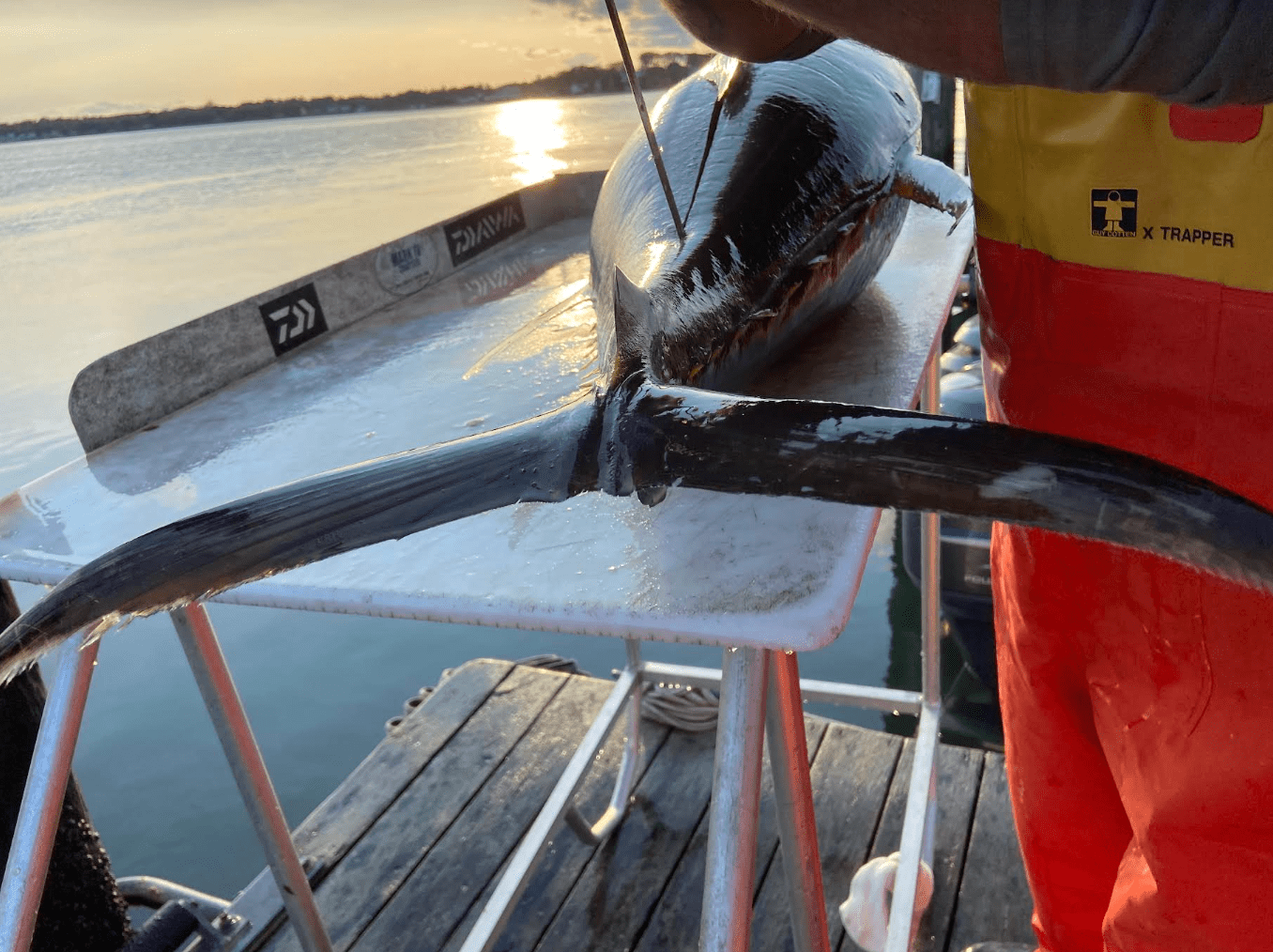
When dealing with extremely large fish—say north of 30 pounds—allowing them to pump out their blood naturally becomes trickier. A bucket won’t help much and most livewells can’t hold a fish that size. Assuming most of these catches are saltwater fish, one option if you’re on a boat is to sever a few gills, place the fish in the corner of the deck near the scupper so the blood drains out and run the raw water washdown hose through the fish’s mouth until the blood stops flowing. You can also take a page from the commercial tuna fisherman’s book and run a rope through the mouth, sever the gills, then drag the fish alongside the boat moving at a very slow speed until it pumps out all its blood.
Should I Bleed Every Fish?
To put it very simply, making a habit of bleeding your catch—regardless of size or species—isn’t bad, because the truth is bleeding a fish is never going to make it taste worse. The bigger question is, does bleeding truly make fish taste better. That’s purely a matter of opinion. You will find arguments on both sides of the fence, but for the purposes of this tutorial, I can offer only my opinion.
I’ve fished all over the world and have been on the water since I was a little kid. In my 40 years, I’ve shared boats and banks with countless people from all walks of life, and shared meals of fish we caught together many, many times. When I was young, fluke, weakfish, catfish, and trout were the targets that came home for dinner most often, and neither my dad nor my old Italian grandfather ever bled any of them. They’d come off the hook and go on the stringer or in the cooler to be cleaned later back at the house. All those fish tasted pretty damned good.
It wasn’t until I got older and started spending more time offshore fishing that bleeding fish became more common in my own fishing. The way I learned it—and how I still feel today—is that it’s most beneficial when keeping a strong-flavored fish for the table. Bluefish, Boston mackerel, king mackerel, and jacks are just a few examples of fish widely known for their dark meat, thick bloodlines running down their flanks, and high oil content. Subsequently, their strong flavor makes them an acquired taste, one which I’ve never been a huge fan of. Whether fishing at home or on the road, I’m bleeding all of these fish species if I’m planning to bring them home for the table. Removing all the blood, however, does not transform their flesh from cod-liver-oil-flavor to white-meat-chicken-tender. Bleeding reduces some of the “fishiness,” but it certainly doesn’t make it go away completely as some people believe.
Bleeding has been a common practice with offshore anglers chasing tuna and swordfish for decades, especially among commercial anglers that sell their catch. Part of the reason it’s critical with these fish is because the fights can last hours, and as large pelagic fish become stressed, they build up and secrete lactic acid into their muscles. This acid, I’ve been told, can give the flesh a metallic taste, but if the fish is properly bled immediately after landing the acid will flush out with the blood. Though most of you probably aren’t chasing tuna and swordfish, there is a lesson here.
Bleed Big Fish
Bleeding, I believe, is more beneficial with larger fish. The bigger the fish the more blood it naturally has in its system. Add in that big fish do, in fact, experience lactic acid build up during long fights, and bleeding becomes a pretty good idea, even when dealing with mild flavored fish. To use striped bass as an example, I’d rather have a 24-incher for the table than a 40-pounder. Given the white meat and mild flavor, I likely wouldn’t bleed that 24 incher. The 40 pounder, on the other hand, is already going to have a stronger flavor given its age and the density of the flesh. So, if I had to kill a fish that size, I’d bleed it immediately. But here’s where things get a tricky: While I can’t swear bleeding improves the flavor of any fish in a major way, I know it absolutely makes a piece of fish look better, and that, I believe, is really the driving force behind the bleeding craze.
You Don’t Need to Bleed Most Freshwater Fish
In all my years chasing freshwater species across the country, I don’t recall one single guide, captain, or friend bleeding trout, crappies, walleyes, perch, or pike. Only recently has more of a debate cropped up over the need to bleed freshwater fish. If you base the decision on saltwater markers—huge fish, long fights, strong fishy flavor—not many commonly eaten freshwater players qualify. The biggest walleye on the planet isn’t fighting long enough to build up acid, and the small amount of blood in a yellow perch isn’t enough to taint the sweet, mild flavor of its white flesh. Bleeding has simply become fashionable, at least in part, due to a shift in our food culture.
Bleeding Fish Makes for Prettier Plates
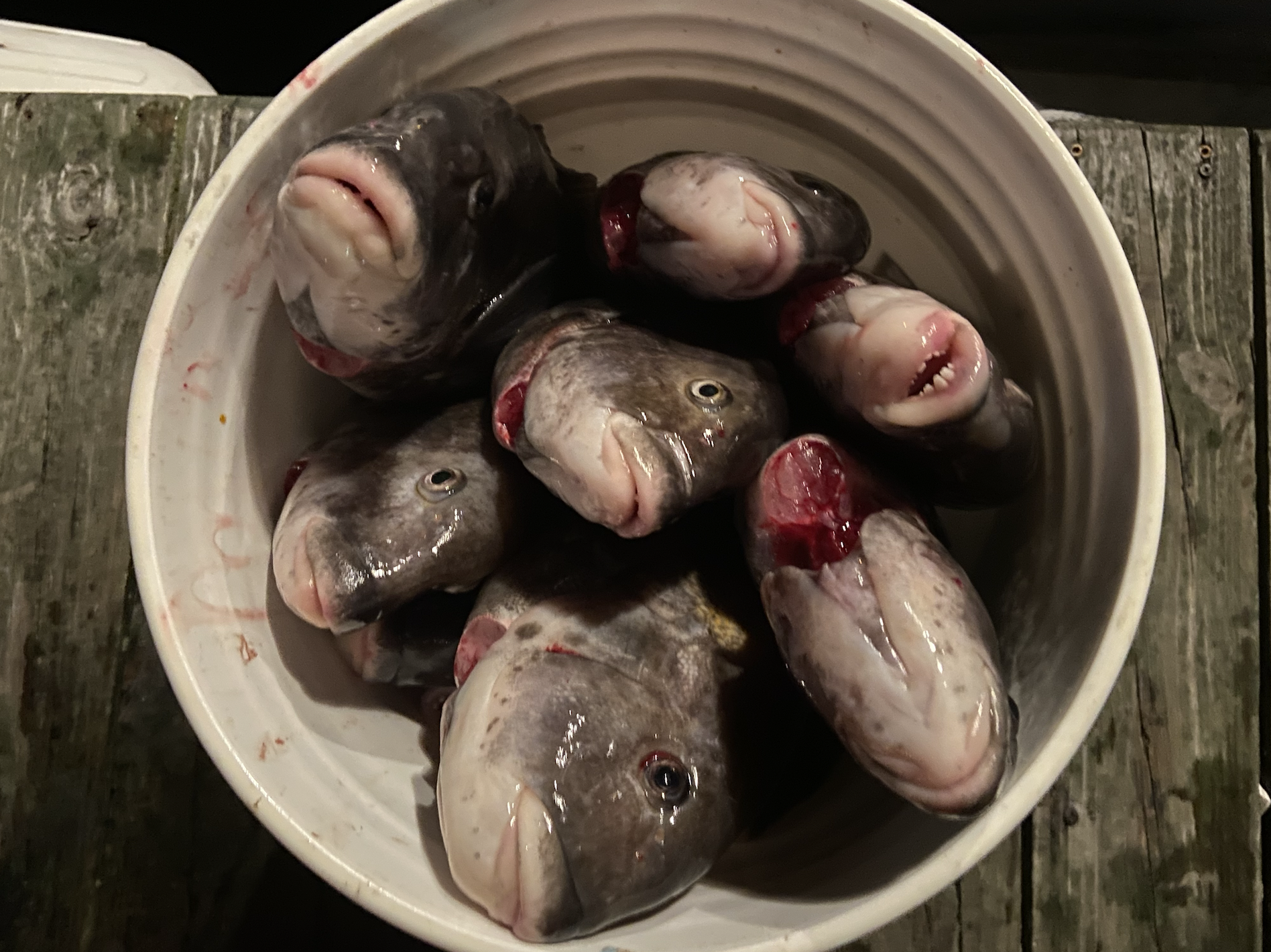
If you understand that we eat with our eyes first, then you understand why we want our food to look pretty. Scroll through any social media feed and you’ll be digitally served up countless platters of perfect dishes and ingredients. If you bleed a fish, you end up with cleaner, whiter meat. You also avoid a bigger mess on the cutting board, of course, which may be the conscious or subconscious reason so many people are now into bleeding. Likewise, whether you realize it or not, you want your ingredients to look nice in the kitchen during prep. If you’re sharing some pike or walleye fillets with a neighbor, you want to hand them something that looks like it came out of Fulton Fish Market, not a Zip-Loc full of blood and scales. Even those commercial tuna guys are guilty of this—yes, bleeding may improve the flavor, but buyers back at the dock want to see the true color of the flesh. They want to see it clean and pristine, not dripping with blood.
To be clear, there’s nothing wrong with bleeding for aesthetics. But if I gave you two pieces of fried walleye, one bled one not, could you taste the difference?
No, you couldn’t. You’ve got a 50% chance of guessing which is which and you might get lucky, but you wouldn’t really taste a difference. Recently, I went out with a buddy off New Jersey for black seabass, a scrumptious wreck-dwelling bottom fish that slam jigs. He was a fan of bleeding, and quickly did so to every fish that went in the livewell. Later back at the dock, he remarked that a couple hadn’t fully bled out. Their fillets were slightly darker than the others. I took my share home, broiled them, and my entire family enjoyed them. I tasted zero difference and apparently my wife and kids didn’t either. Bleeding is a choice not an edict.
Basic Rules of Fish Care
It’s important to realize that bleeding a fish is only one small step in an overall process that anyone who truly wants their catch to present and taste good needs to follow. In fact, a bled fish means very little if you don’t take proper care of it after bleeding, or if you bleed it at the wrong time. Here are a few pointers for a timing a bleed, and a few things to consider when planning to keep any fish for the table.
Ice it Down
Nothing preserves a catch like ice. It is, in my mind, the most critical element to quality fish on the table. A common mistake I see, however, is anglers not bringing along enough ice to properly cool and pack their catch. If you’ve got, say, a limit of walleyes and perch in a cooler and you’re dropping one bag of half melted ice on them, you’re not properly cooling those fish. This is why offshore anglers spend lots of money to load their boats with a hundred pounds of ice or more. Not only do you want your fish completely surrounded by the ice for fast cooling, but packing it tightly also stops it from rolling around in the cooler during transport, which can bruise the flesh. I know bagged ice isn’t cheap, but I’d rather waste some ice than catch a few big fish (or pile of small ones) that I can’t chill properly.
READ NEXT: Best Fishing Coolers
Keep it Alive
Carrying ample ice is easier when you’re out on a boat, but what if you’re fishing from shore? Obviously, you’re not going to drag a cooler brimming with cubes up and down trails. Still, you should have a cooler in the truck so you can get your catch on ice ASAP at the nearest gas station or convenience store. In this case, what matters is how you treat the catch until you can secure that ice.
A mistake I often see is people bleeding a fish long before it’ll hit the ice. Let’s say, as an example, you have five walleyes swimming in the livewell, but you plan to fish for another five hours. The move would be keeping the livewell pump on and keeping those fish as healthy as possible until you’re headed back to the dock or ramp. That’s when you’d bleed them. Though this is less of a concern during colder months, if you were to bleed them all upon landing in the dead of summer, now you have dead fish soaking in warm water for hours. Without a cooler of ice ready to receive the bled-out fish, you’re potentially ruining the quality of the meat.
Likewise, when fishing from the bank, smaller fish should be kept in a bucket if possible, and you’ll want to frequently change the water to keep it oxygenated. Larger fish can be put on a stringer, however, consider running the rope or chain through the bottom jaw and opposed to through the gills and out of the mouth. Even though you may not be severing the gills immediately, the stringer alone will diminish the fish’s ability to breathe properly, and it’ll die pretty quickly.
Final Thoughts on How to Bleed Fish
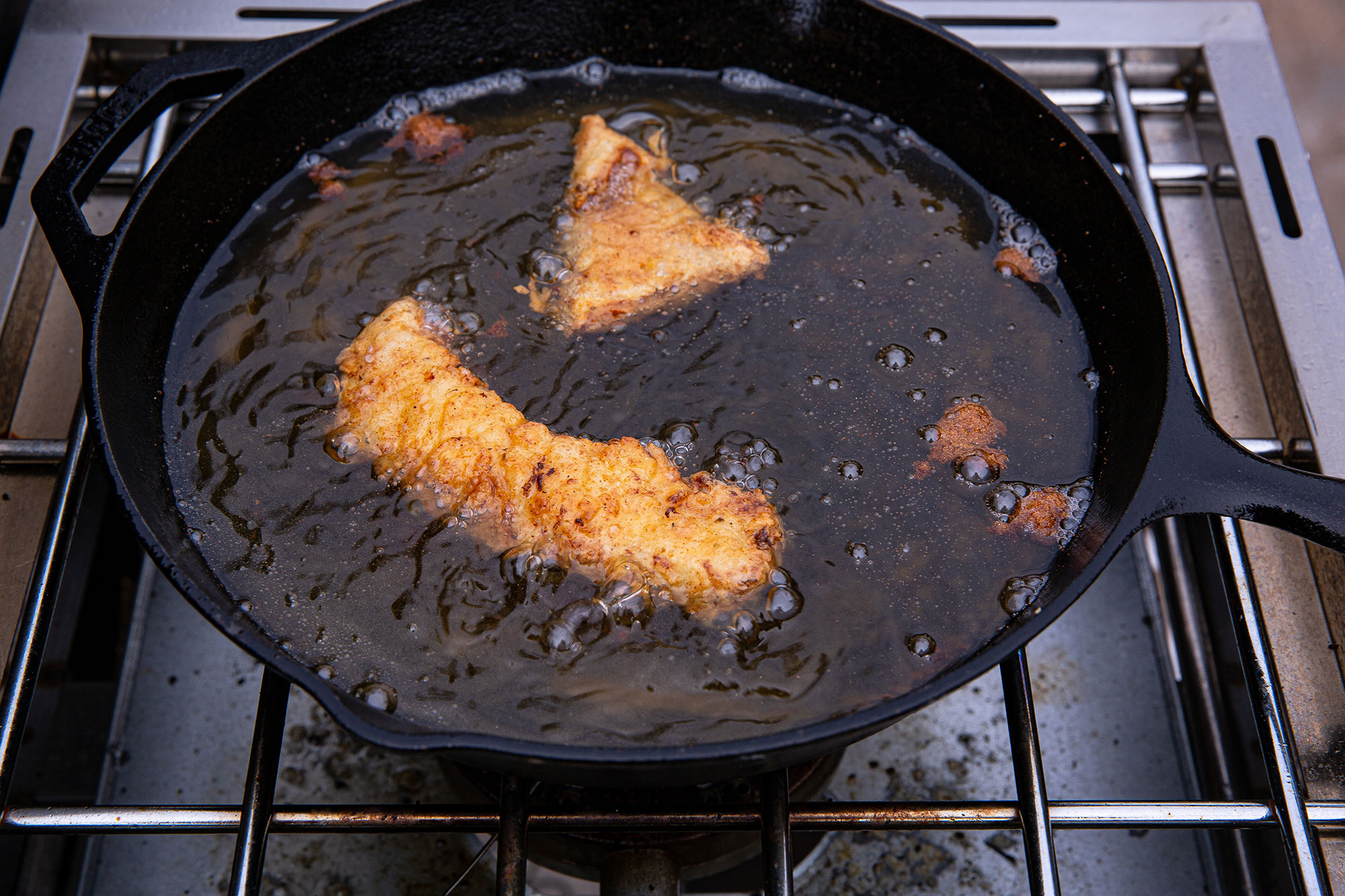
Don’t overthink bleeding fish. Just have a plan on how you’re going to care for fish that you’ll intend to keep. Consider temperature, time on the water, and travel time between water and cutting board. Lots of ice and good boat coolers are key. If you don’t have the proper items in place, just throw the fish back.

